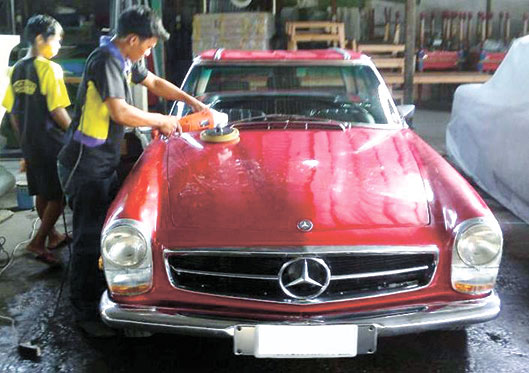Substance, form and car culture
 Atty. Jerome G. Neri
Atty. Jerome G. Neri
The Scrutineer
I STARTED driving and had my first car in the mid- to late ‘80s. This was a time when the Philippine car industry was at its lowest point. At that time, the only car companies selling brand-new cars were Nissan and Mitsubishi. Nissan had the Stanza, while Mitsubishi was still selling the Lancer Box type, Galant and the L300 van. Car lovers then were not so interested in the brand-new cars; what they wanted were older models which were then customized to their own taste.
Popular cars then were the 1973 Toyota Corolla, 1980-83 Corolla Liftback, 1976 Mitsubishi Colt Galant, 1980 Toyota Starlet, the Mitsubishi Colt Lancer L-type, E-type and Box type. The car culture in those days was very different from today.
During those days, engine performance was high on the to-do list of the car guys. After installing a nice set of mag wheels, an engine upgrade was the next order of business. Car guys then preferred twin webbers over a booming sound system or body kits (which at that time were sold separately as spoilers and side skirts). No one used brand name exhaust; instead, they had custom high-performance exhausts made in local shops such as Muffler Haus and Nodalos. It was a time when substance was more important than form.

It was a time when car guys would buy a car, strip it down to bare metal, paint it, then upgrade the engine and wheels. Everything was custom: bigger, more powerful engine, five-speed transmission, more aggressive differential ratio and a full custom exhaust. The finished product would be a much better looking and performing car compared to when it was new.
The physical appearance of the car remained more or less stock apart from the custom paint job and the mag wheels. Substantially, though, the cars had a lot more performance in them than they had originally when sold brand new.
As we entered the ‘90s, there was the revival of the Philippine car industry, and there were all-new models to choose from and new accessories. At the same time, it was the coming of age of the compact disc. New, powerful car stereos, bigger wheels and modern body kits entered the market. It was an instant revolution of the car culture.
Since cars were new, engine swaps and upgrades ceased to be a priority. Big mag wheels, powerful stereos and body kits became the accessory of choice; the era of good car audio sound quality and ducktails began. It was this ducktail phenomenon that ushered in the full body kit craze. It was all about looks. It did not matter whether or not it ran fast as long as it looked fast.
As the ‘90s drew to a close, brand-new performance cars were sold in the Philippine market. Honda was first with the Civic Sir. Toyota had the Corolla turbo Tom’s edition, and Mitsubishi had the Lancer Evolution IV. The high performance movement was back for the new millennium.
With high performance back, coupled with better knowledge of EFI systems, some of the new and a lot of the old car enthusiasts started building performance cars again by doing engine swaps or modifying their engines just like in the old days. Unlike before, the current car craze did not die. The new high performance enthusiasts were a different group altogether, and the car stereo enthusiasts and the car accessory enthusiasts were still around. This was the beginning of the new growth in car culture.
From the new millennium up to today, the car scene growth has been massive. There are more than 20 car clubs with different interests and passions. In the classic arena, we have the American muscle, exotics, vintage, and Japanese old school enthusiasts. In motorsports, we have drag racers, autocrossers and rally crossers. For high performance, there is a Nissan GTR group, Porsche group, a BMW group and a Subaru group. Cebu has a stance and fitment movement for those who want their cars to be as low as possible.
What is amazing with the car culture not only in Cebu but worldwide, is that despite the diversity in a car person’s passion, when two or more car persons meet, be it in a bar or in a grocery store, regardless of what type of a car person he or she may be, there will always be a good conversation and new friendships made. There is a certain unity in the car world that would be nice if it could be replicated in life in general.



